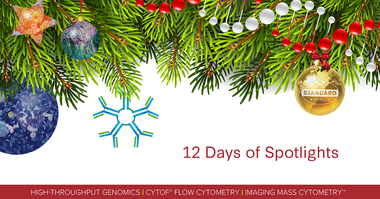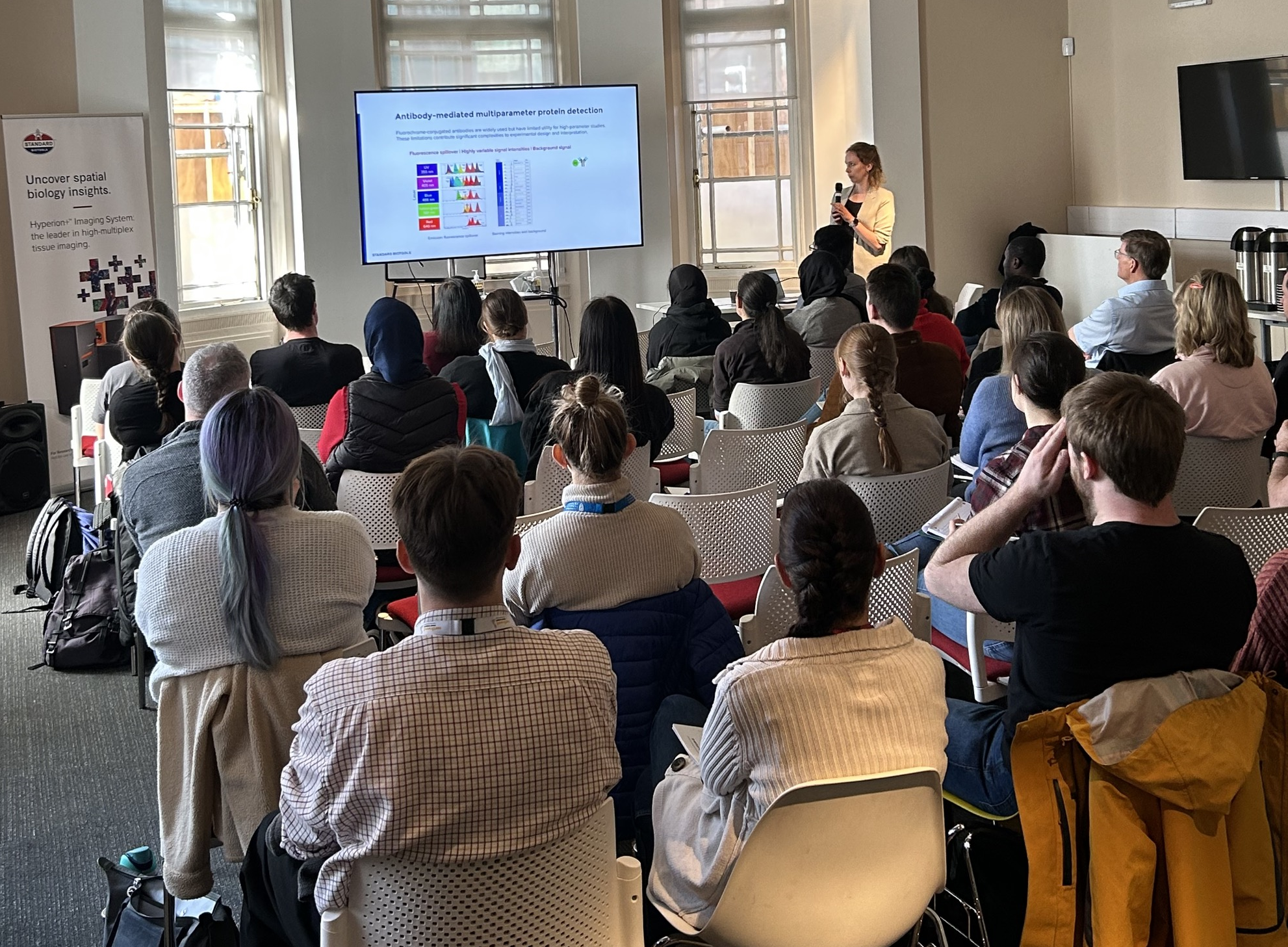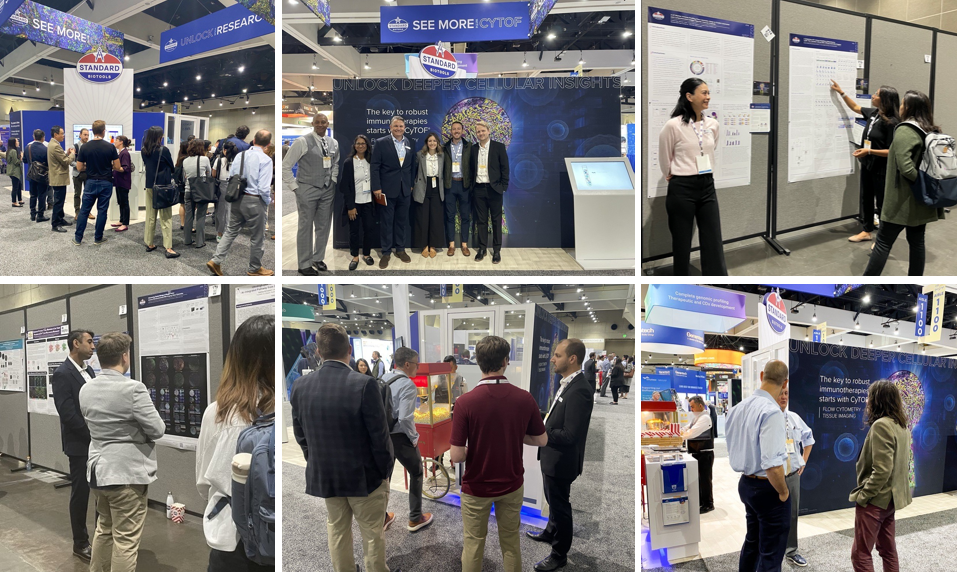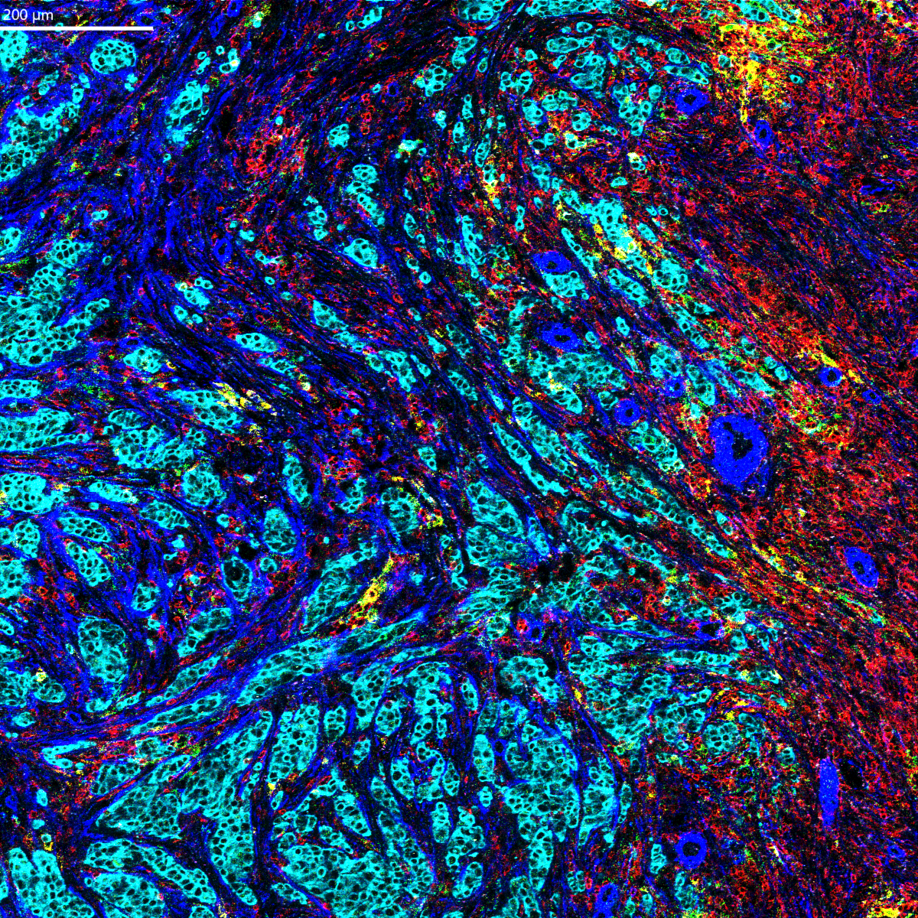12 Days of Spotlights
The holidays are upon us, and to begin the celebration, we’re sharing 12 Days of Spotlights! Check out some of the talk highlights of the year and learn from the best how to integrate microfluidic, cytometric and imaging methodologies into any workflow across a wide variety of research areas, from immuno-oncology and infectious disease to drug development and precision medicine.

Sabelo Lukhele, Scientific Associate, Princess Margaret Cancer Centre, University Health Network
IRF2 Drives Interferon-Mediated CD8 T Cell Exhaustion to Restrict Anti-Tumor Immunity
In this talk from our much-anticipated 12th CyTOF® Summit, Lukhele discusses how type I interferons, which are central regulators for hallmarks of cancer, can take on immunosuppressive roles that drive therapy resistance. Using a mouse model to analyze the immune landscape across diverse tumor types, Lukhele describes these opposing outcomes of interferon signaling. Learn more about how mouse models can enable studies that reveal details of tumor development, progression and treatment.
Daniela Quail, Assistant Professor, Rosalind and Morris Goodman Cancer Institute and the Department of Physiology, McGill University
Spatial Dissection of the Tumor Immune Microenvironment: Applications for Fundamental and Translational Research
In another presentation from this year’s CyTOF Summit, Quail discusses using Imaging Mass Cytometry™ – a trusted technology that enables researchers to accurately assess complex phenotypes and immune spatial interactions in the tissue microenvironment – to study the complexity of cancer and heterogeneity across tumors. She describes using IMC™ to understand immune dynamics in tumors, first in the brain tumor microenvironment (TME) to identify new cell populations that might help understand tumor biology and then in non-small-cell lung cancer patients to predict recurrence and survival outcomes.
The European Federation of Animal Science
Promoting Animal Health and Welfare via Pathogens Control
This webinar, cohosted with the EAAP, features Christian Ducrot from the National Research Institute for Agriculture, Food and Environment (INRAE) and Nicole Bakkegård Goecke from the University of Copenhagen discussing how to improve animal well-being and productivity with environmentally sustainable practices and the adoption of advanced genomic tools. Learn how Standard BioTools™ microfluidics technologies can help you quickly adapt your research to evolving species and the rapidly changing climate, elevating necessary strategies to develop sustainable agriculture and keep pace with our growing population.
Allie Greenplate, Director, Strategic Alliance and Operations, Immune Health, Perelman School of Medicine, University of Pennsylvania
Unlocking the Power of High-Dimensional Data for Clinical Research and Patient Care
In a talk from the 12th CyTOF Summit, Greenplate discusses the use of CyTOF technology along with the Maxpar® Direct™ Immune Profiling Assay™ to provide a rapid, standardized approach to collecting detailed immune response data from patients that can then be translated into quantitative, actionable information for discovery and clinical care teams. The Maxpar Direct Immune Profiling System, the first complete sample-to-answer solution for single-cell high-dimensional immune profiling of human PBMC and whole blood, enables discrete quantification of 37 immune cell populations, with a variety of Expansion Panels available.
Chad Stevens, Senior Scientist, CyTOF Operator, Pfizer Worldwide Research & Development
Multiplexed Barcoding for Quantitative Bioanalysis
Stevens uses his CyTOF Summit talk to discuss the use of cellular biomeasures, a quantitative understanding of biological targets and pathways, to fuel translational modeling and simulation from data generated by CyTOF technology and other modalities and determine drug interactions, efficacy and dosing predictions. CyTOF flow cytometry is a method uniquely positioned to provide a tremendous amount of data to be analyzed and turned into action in the clearest and quickest way possible, making it ideal for drug development and efficacy testing.
Eurofins Genomics
Accelerate Marker-Assisted Selection, Breeding and Traceability Programs
In this webinar cohosted with Eurofins Genomics, Frederic Antigny, Senior Director, Agrigenomics Market Europe, talks about scaling up the Eurofins genotyping workflow to accommodate massive volumes; applications for livestock genetics, such as pathogen screening and trait/inherited disorder panels; and applications for plant genetics, such as marker-assisted breeding and genetic purity testing. Learn more how our new Biomark™ X9 System for High-Throughput Genomics can complement and diversify your current genotyping capabilities and streamline your workflow.
Jared Burks, Professor, Co-Director, Flow Cytometry and Cell Imaging Core Facility, The University of Texas MD Anderson Cancer Center
The Path to Function by Integrating Relevant Technologies
This presentation from the CyTOF Summit sees Burks describe the use of feedback loops from several different technologies to understand the underlying biology of cells and tissues and determine tissue composition, construction and function. He shares an ovarian cancer study in which the applications of four different technologies were integrated to provide the most comprehensive look into precise characteristics of the disease and avoid biases linked to the high level of heterogeneity in the ovarian TME.
Alice Wiedeman, Manager, Human Immunophenotyping Core, Benaroya Research Institute
Building a Best Analytical Toolbox
Wiedeman presented at the 2023 CyTOF Summit, offering an organized methodology and considerations for choosing the right data analysis tool to match the scientific question, quality and size of a dataset and user proficiency. She shares examples of how using these parameters to choose the right tool has helped accelerate data analysis and generate comprehensive insights, including monitoring immune changes after drug treatment, evaluating a self-reactive T cell phenotype and comparing Down syndrome immune differences.
Jennifer Gorman, Scientific Associate and Lab Manager, Lunenfeld-Tanenbaum Research Institute, Sinai Health
Tumors as the Sum of Their Parts: From Rare Cells to Multicellular Networks
In this CyTOF Summit talk, Gorman describes the advantages and challenges associated with tissue imaging, and specifically Imaging Mass Cytometry, highlighting a set of approaches to overcome challenges and several advancements to move forward with a better understanding of biology. She discusses imaging speed, multimodal measurements, panel design, correlative functional testing and biological questions that can only be answered by using CyTOF technology.
Hiranmayi Ravichandran, Director, Spatial Biology, Weill Cornell Medicine Englander Institute for Precision Medicine, Senior Research Associate, Department of Physiology and Biophysics, Weill Cornell Medicine
Addressing Cancer Disparity in Prostate Cancer Through Multiplexing Lens
Ravichandran uses her CyTOF Summit presentation to present a study investigating differences in the TME of prostate cancer based on ancestry and racial disparity. The study, which used Imaging Mass Cytometry to combine markers from several related pathways into two 38-marker panels, evaluated the proteomic aspects of tumor activity and found correlations between tumor structure and immune infiltration status that explain why some cancers have higher immunosuppression than others. Because IMC uses metal tags that don’t deteriorate and can be stored for extended periods, this powerful technology is well suited for multi-site and longitudinal studies.
Florence Patel, Investigator, CyTOF Preclinical Capability Lead, GSK
Implementation and Preclinical Applications of Mass Cytometry in the Pharmaceutical Industry
In her CyTOF Summit talk, Patel discusses CyTOF technology at GSK, how it has affected their research, an example of its use for deep immune profiling of in vitro exhausted CD8+ T cells and ways in which the team has expanded and streamlined the use of CyTOF flow cytometry. Patel also talks about how their CyTOF XT™ systems are positively impacting drug discovery programs. Learn more about how CyTOF XT can capture critical biological information, identify novel disease drivers and ultimately design better therapies.
Juliet Emamaullee, Associate Professor of Surgery and Immunology at the University of Southern California Keck School of Medicine, Surgeon, Keck Hospital, Children’s Hospital-Los Angeles
Optimizing IMC Image Pre-Processing, Segmentation and Analysis Pipelines in Non-Cancerous Human Tissues
In this Scientist in the Spotlight presentation, Emamaullee speaks about how multiplexed imaging techniques such as Imaging Mass Cytometry enable single-cell analysis of immune phenotypes within fixed clinical tissue specimens and how her lab has been using this technique to study the immune landscape of chronic rejection from liver transplant recipients. She discusses how her group optimizes analysis of IMC outputs from an 85-patient set of liver transplant tissue to generate high-quality datasets that enable deep characterization of immune subpopulations with multiple markers per cell type.

Check out other blog posts
Thanks for a wonderful 2023
Standard BioTools closed out the year with a full fall conference season. Here are some of the exciting regional events at which we had the opportunity to showcase our newest tools and technology.
Unlocking deeper cellular insights at SITC 2023
Unless explicitly and expressly stated otherwise, all products are provided for Research Use Only, not for use in diagnostic procedures. Find more information here.



